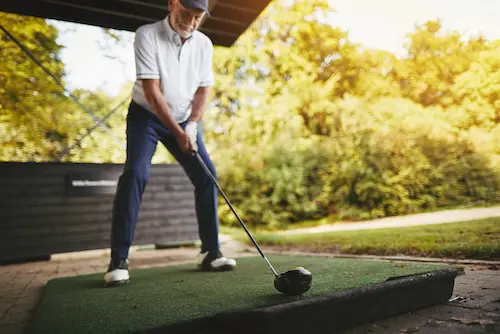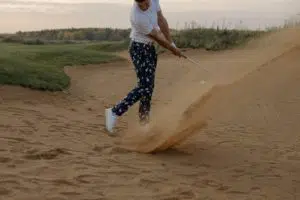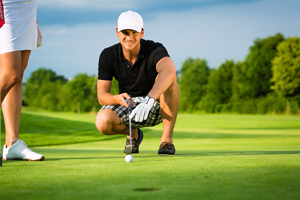
Golfer’s elbow or medial epicondylitis is an inflammation of the wrist flexor tendons on the inside of the elbow. It is similar to tennis elbow but less common. This is a condition that causes pain and inflammation to the tendons that attach the forearm muscles to the bony knob on the inside of the elbow. Surrounding muscles also become affected. Learn more below on how a golfer's elbow treatment can be provided by Knoxville Spine and Sports!

It is generally caused by increased or repetitive stress with wrist flexion activities when the muscles and tendons are overused such as the golf swing, throwing sports, weight lifting, and forceful, repetitive occupations such as an electrician or construction work. This condition is not limited to golfers. Tennis players or those repeatedly using their wrists and forearm muscles can suffer from this as well.
People who perform the same activity on multiple days for more than 1-2 hours are at higher risk for developing this condition. This condition is much easier to treat in the early stages so if you have the following symptoms it is better to seek medical attention soon after symptoms appear if a home program doesn’t seem to be alleviating the symptoms.

Golfer’s elbow also called pitcher’s elbow, is caused by damage to the muscles and tendons that attach to the inside of the elbow. These muscles and tendons control movement of the wrists and fingers and damage can lead to pain, restricted movement, and inflammation. The damage is typically related to extreme force or repeated stress, as in forceful wrist and finger motions. It typically affects the right arm in right-handers and the left arm in left-handers.
Gripping or swinging clubs incorrectly or too forcefully, using a racket that is too heavy or too small, poor warm-up or conditioning before a sport, improper lifting or throwing, or improper technique when weight-lifting can also contribute to a golfer’s elbow.
Additionally, this may occur with any activity that requires continual bending and straightening of the elbow, such as painting, raking, hammering, chopping wood, using a computer, assembly-line work, and cooking. The activity generally needs to be done for more than an hour a day for several days to cause injury.
The following tips can help prevent you from developing a Golfer's Elbow:
If a home treatment program does not resolve your symptoms you should seek out your physical therapist or chiropractor for an evaluation to determine the best plan of care.
Rest is the initial and most important step in the healing of the golfer’s elbow. Muscles and tendons that are overused simply need time to relax and rest. Frequent use of ice (3-4 times per day) reduces any inflammation that occurs. If pain or discomfort does not decrease within 3-4 weeks, therapy is advised to learn proper stretching and strengthening exercises to speed up the healing process.
Golfer's Elbow treatment will include some of the following soft tissue mobilization, joint mobilization, dry needles, laser, Kinesio taping, and a stretching and strengthening program. All of these treatment options can be performed at Knoxville Spine and Sport so call us today to set up your initial evaluation and to determine the best course of treatment to prevent this from becoming a chronic condition.
430 Montbrook Lane Suite 203
Knoxville, TN
37919
Phone: 865-337-5574
Monday
7am-12pm & 1pm-6pm
Tuesday
7am-12pm & 1pm-4pm
Wednesday
7am-1pm
Thursday
7am-12pm & 1pm-6pm
Friday
7am-12pm & 1pm-4pm
Saturday & Sunday
Closed